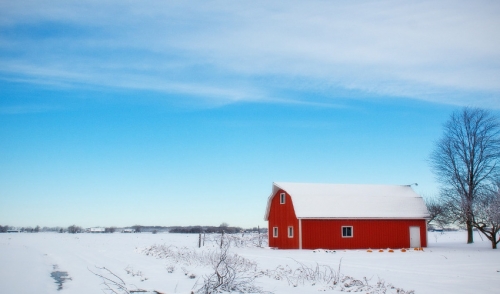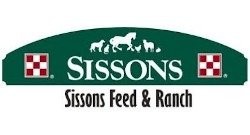
Barn Winterization Checklist
Whether you farm just a few acres, raise any type of livestock or oversee a large commercial agricultural operation, your barn is a critical structure in winter. It shelters your stock from cold, protects your gear from snow and ice and stores supplies for storms. Because it is such an important part of your farm, it is necessary to be sure your barn is ready for winter, and the right winterizing can ensure your barn fulfills all its winter tasks with ease.
15 Must-Do Tasks to Prepare Your Barn for Winter
Proper barn winterizing can begin as early as late summer, and over a few weeks you will be able to do everything necessary to prepare and equip your barn for the harshest winter weather or longest cold season. Even if you're late getting started on a barn winterization checklist, however, there is still plenty you can do to get your barn ready for the cold.
- Interior Cleaning
Remove old birds' nests, cobwebs, dust and debris to make the barn more comfortable for livestock that will be cooped up for much of the winter. Removing this material also reduces fire risk and gives you the opportunity to closely inspect every corner of the barn for any needed repairs.
- Exterior Cleaning
Before it is too cold to work for long periods outdoors, clean up around the outside of your barn. Prune back any overhanging branches that could break under a heavy load of snow and ice, and remove any debris or compost piles nearby to keep pathways clear.
- Roof Repairs
Carefully inspect the roof and make repairs as necessary to prevent leaks. Clean out rain gutters, and close any roof vents that are not needed for winter ventilation. Be sure shingles are securely fastened to withstand potential blizzard winds, and check that there are no areas where ice will build up dangerously on the roof.
- Building Repairs
Check all doors, windows, railings, fences and gates and make any needed repairs. Oil or grease hinges and slide rails to be sure they move easily, block any holes rodents may use to enter the barn and fasten down any loose boards or protruding nails that could cause injuries to people or livestock.
- Adjust Ventilation
It is necessary to close some vents and block some drafts to help keep the barn warm in winter, but do not seal it up tightly. Animals need good ventilation to prevent respiratory problems, but too many drafts will create chills. Check that air filters and fans are functioning properly to aid air circulation.
- Update Insulation
If needed, add more insulation around doors, inside walls or along the roof to help conserve warmth in the barn. This will also help to block drafts and keep livestock more comfortable even in the coldest weather. Caulking around closed windows and installing draft guards on doors can also be helpful.
- Electrical Checkup
Check all electrical wiring in the barn to be sure there are no exposed wires or other fire risks. Check fuses and circuit breakers, ensure outlets are grounded and test all bulbs to be sure they are working. Change batteries in flashlights and keep several handy in the barn in case of a power outage.
- Safety First
Be sure all the barn's safety features are updated and working properly. There should be adequate fire extinguishers and smoke alarms. Toxic chemicals must be out of reach of livestock. Sharp edges need to be dulled or covered, and trip hazards need to be removed.
- Check the Water Supply
Liquid water is critical for livestock in winter, and frozen pipes can burst and cause massive damage. Check that pipe insulation is adequate, and add heat tape if needed to keep pipes protected from freezing temperatures. Check that heaters are functioning in water tanks, and be sure the tank is clean and free of contaminants. Consider wrapping the tank for added insulation.
- Remove Clutter
Sort through tools and equipment, getting rid of any broken, unusable or unwanted items. Note where items may need replacement and do so right away or start a list for spring chores. This will free up storage space and make it easier to find the items you need right away.
- Mud Management
You will be going in and out of your barn throughout the winter, and you won't want to track mud and moisture all around. Examine the trails, paths and drives leading to the barn, and take the necessary steps to improve water drainage and minimize mud, especially around entrances. This will keep the barn cleaner and reduce the risk of ice buildup that can cause dangerous slipping.
- Cull Livestock
Before committing to feeding and caring for unprofitable livestock through the winter, consider culling herds and flocks to remove sick, elderly or unproductive animals. Even if the profit from these animals may not be at its peak in fall, you will save the expense of winter care and open up more room for the rest of the livestock to be less crowded in the barn.
- Stock Up
Heavy storms and power outages can limit supply replenishment in the winter, and it is important to have an adequate stock of food, grain, bedding, water and other essentials on hand in the barn. A 1-2 week supply is best, but avoid stocking up too much in case supplies rot before they can be used. Take care that supplies are not accessible by rodents or other damage as well.
- Winterize Equipment
Winter may just be starting, but spring is already on the way. Be sure tools are sharpened and repaired as needed, and oil and store them properly so they are ready to be used right away in spring.
- Plan for Pets
If you have dogs or cats that are welcome in your barn, be sure they have a warm, comfortable place to spend the winter. Create a snug space using hay bales so they can sleep comfortably, and be sure to stock up on their winter food and other supplies as well.
It may seem daunting to fully winterize your barn, but a step at a time you'll get there and be well-prepared for anything winter may bring.
